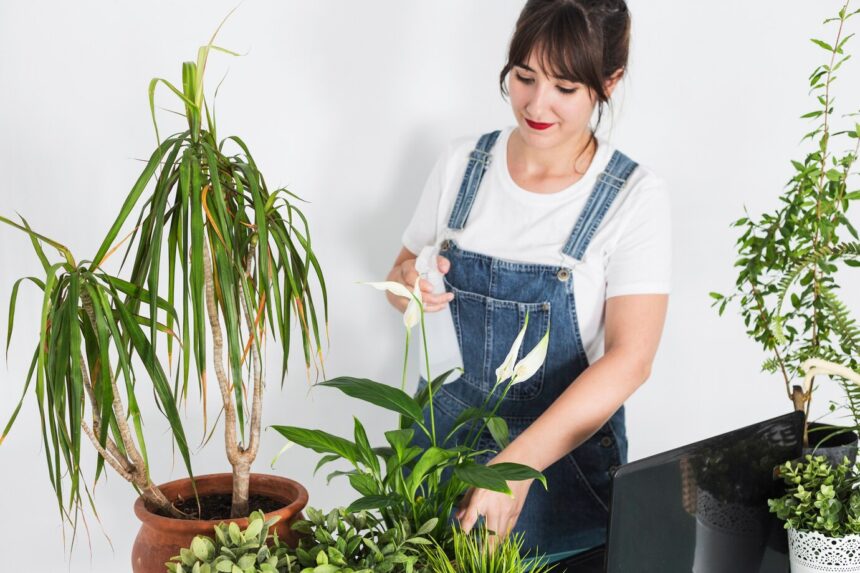Potting plants is a rewarding way to bring nature into any space, whether it’s a cozy apartment or a vibrant garden. Proper potting plants techniques can improve plant health and growth by ensuring they have the right environment to thrive. With the right pot, soil, and care, anyone can create a beautiful container garden full of life.
Choosing the appropriate pot is crucial, as it helps with drainage and allows the plant to grow comfortably. Understanding what type of soil to use and how to properly plant and maintain your greenery can make a significant difference in their success. With a little knowledge and effort, potting plants can transform home or office spaces into lively, green retreats.
Caring for potted plants goes beyond just watering. It involves paying attention to their needs and addressing any issues that may arise. By mastering the basics, anyone can enjoy the benefits of indoor and outdoor potted plants throughout the year.
Key Takeaways
- Proper pot selection enhances plant growth and health.
- The right soil and techniques are essential for successful planting.
- Ongoing care ensures plants thrive in their containers.
Understanding Potting Plants
Potting plants offers unique benefits and allows for a wide variety of plant choices. Selecting the right plants is important for successful container gardening.
Benefits of Potting
Potting plants provides several advantages. First, it offers flexibility in plant placement, allowing for movement to optimize light and aesthetics. Plants can thrive in containers that are easy to transport.
Container gardening also helps in space management. Those with limited garden space can grow a variety of plants in smaller areas.
Furthermore, potting plants can lead to better pest and disease control. Isolated roots can be monitored easily, and proper soil can be maintained for each plant type.
Finally, container gardening allows for better drainage. Choosing the right potting mix ensures plants receive the proper nutrients while preventing waterlogging.
Types of Plants Suitable for Potting
Many types of plants do well in pots and containers. Herbs are a popular choice for beginners. Common herbs like basil, parsley, and mint grow well in smaller pots and are easy to care for.
Flowers also thrive in containers. Annuals, such as petunias and marigolds, bring color and can be quickly replaced seasonally. Additionally, some perennials, like lavender and chives, adapt well to pot growth.
Vegetables are another option. Many vegetables, including tomatoes, peppers, and greens, can be successfully grown in pots. They often require deeper containers for root support and drainage.
When choosing plants, it’s essential to consider the container size and sunlight needs. This ensures healthy growth and vibrant results.
Choosing the Right Pot
Selecting the correct pot is essential for plant health. Factors like materials, drainage, and size significantly affect growth and care.
Materials and Durability
The choice of pot material influences both the plant’s health and the pot’s lifespan. Common materials include:
- Plastic: Lightweight, durable, and often inexpensive. It retains moisture well but may not allow for good airflow.
- Terra Cotta: Porous and allows airflow, which helps prevent root rot. However, it can dry out quickly in hot conditions, requiring more frequent watering.
- Ceramic: Usually comes with a glaze, which can enhance appearance. It retains moisture well but may be heavy and prone to cracking.
- Metal: Strong and modern in design. Metal can heat up quickly, potentially harming roots. Proper insulation helps.
Choosing high-quality materials ensures that the pot lasts through weather changes and provides a stable environment for plant growth.
Drainage Considerations
Proper drainage is vital to prevent water accumulation, which can lead to root rot. Pots must have drainage holes at the bottom to allow excess water to escape.
- Drainage Holes: Ensure there are enough holes based on the pot size. For larger pots, multiple holes are often recommended.
- Drainage Medium: Adding materials like gravel or stones at the bottom can enhance drainage. This helps keep the soil from compacting and allows water to flow freely.
- Tray Usage: If using a tray to catch excess water, monitor it regularly. Standing water can still harm plant roots if not addressed.
A well-drained potting plants setup allows the plant to access needed moisture without risk of overwatering.
Size and Space Requirements
Choosing the right size pot is crucial for plant health. A pot that is too small restricts root growth, while an overly large pot can lead to moisture retention issues.
- General Rule: Move up to a pot that is 2 inches larger in diameter than the current pot. This adjustment allows for healthy growth without overwhelming the plant.
- Root System: Consider the plant’s root system. Fast-growing plants may need more space, while slower-growing varieties can thrive in smaller pots.
- Space Availability: Assess available space whether it’s indoors or outdoors. Ensure pots fit well in the designated area to avoid overcrowding plants.
Selecting the right size pot helps create a conducive environment for the plant to thrive.




